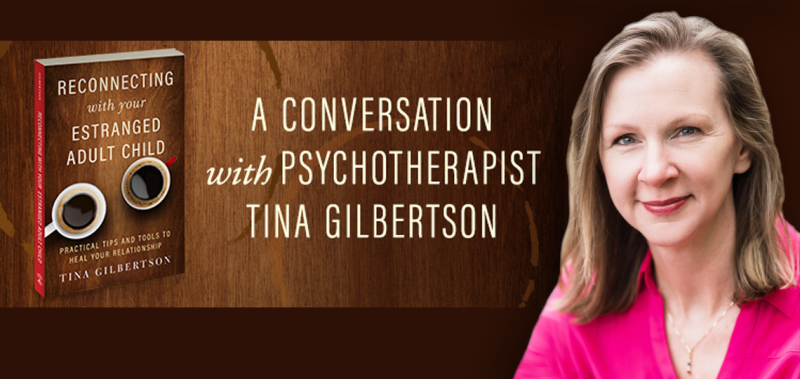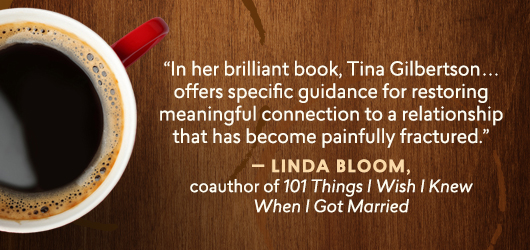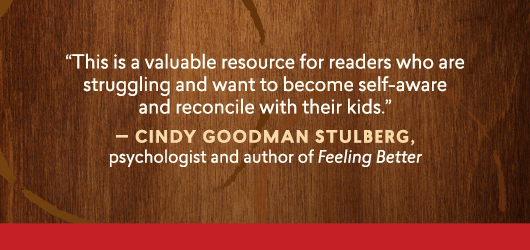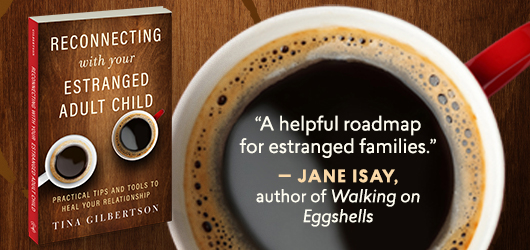Reconnecting with Your Estranged Adult Child

Earlier this year, as it became clear lockdowns were imminent, people around the globe were seized by the same singular thought as they stared down the barrel of an unpredictable future: “Go home.” Commercials for everything from mobile data deals to toilet paper are preaching connectedness and the importance of family, but, for many, the word “family” inspires more longing and loneliness than peace. Estrangement afflicts countless relationships, occurring in countless forms, but the estranged parent-adult child relationship brings a unique, profound pain.
Working to destigmatize this estrangement and provide a path forward, Tina Gilbertson has distilled her research with estranged parents and adult children into the practical volume Reconnecting with Your Estranged Adult Child. “Modeling both hope and protective boundaries, the book advocates for viewing life in a holistic way and re-centering broken relationships,” says Melissa Wuske in her review for the May/June issue of Foreword Reviews, scratching but the surface of Tina’s guide to conquering fear and effecting lasting change.
Eager to learn more about her mission to bring hope and healing to estranged parent-adult child relationships, we connected with Tina for an interview. We are certain you will find her answers as helpful and informative as we do.

You’ve been a psychotherapist for over a decade, no doubt dealing with many different people with myriad experiences. What drew you to focus on the estranged parent-child relationship in particular?
Through a number of my early therapy clients, I became aware that estrangement was a problem in many families. Once I started to learn what the issues were, I wanted to contribute to a solution. In 2008 I started writing down what I knew about some of the dynamics in the parent-adult child relationship that led to estrangement, from the point of view of the adult children sitting across from me in therapy. The more information I put out there on the internet about these issues, the more questions I received from rejected parents. There was clearly not enough help available at the time. I had so much compassion for both the parent and the child in estrangement, I wanted to bring a non-polarizing, solution-focused approach to the problem. That meant working directly with parents, because it’s often harder for them to find a therapist with whom they feel comfortable and not judged.
Not all estrangements are created equal, and you outline in your book certain situations (such as a child leaving home for the first time) where some temporary distance is to be expected. In your experience, what are a few key elements concerned parents could use as a sort of litmus test to determine the line between growing pains and a more serious estrangement?
The first clue would probably be the quality of the relationship during your child’s teen years. Chronic problems between parents and children during those years are a risk factor for later estrangement. If your relationship was generally peaceful and positive before your child left home, and if she hasn’t made any pronouncements about why she’s keeping her distance, and if there’s no history of abuse in your family or in the other parent’s family, estrangement is much more likely to be a bid for independence, and temporary. (If there’s abuse in the family tree, it can cause trouble in the relationship that may not be immediately obvious to the parent.)
With the growing popularity of social media, it seems as if both opportunities and expectations for connectedness have increased. Have you noticed this unprecedented availability impacting estranged relationships? Is the effect more positive or negative?
In rejected parents, I see mostly negative experiences with social media. Many are blocked from viewing their children’s posts, and that’s very painful in itself; they long for any tidbit of information that may help them feel connected again. But when parents are not blocked, they’re often hurt by what they see. Either the child is happily communing with others and the parent feels left out, or the child appears to be in distress—and that hurts the parent in a different way. Parents may also compare themselves to friends who post pictures of themselves enjoying the company of their own children. There are just so many ways to feel hurt, rejected, and anxious when it comes to social media. I recommend setting limits on viewing it.
You take care in your book to cover a wide variety of circumstances that may hinder repairing estranged parent-child relationships, such as poor communication, shame, low self-worth, or playing the “blame game.” What would you say is the most common barrier parents come up against, either within themselves or from their children?
Every obstacle for the parent can be boiled down to the same fundamental factor: shame. All good parents experience a certain amount of shame about their parenting. It’s impossible to do it perfectly, and yet society’s expectation is for perfection. When your own adult child rejects you, it feels like a confirmation that you were a terrible parent. And unfortunately, that feeling can trigger a cascade of other obstacles. The biggest one is confused helplessness—not understanding why your child is choosing estrangement, and feeling like there’s nothing you can do about it. Shame gets in the way of clarity and discourages parents from making the efforts necessary for healing. If you can overcome shame, suddenly you get all this power back and you’re ready to create a better outcome.
While your book deals most with navigating a reparation where there is at least some contact between parent and child, you also have sections devoted to no-contact estranged relationships. The prospect of rebuilding a burned bridge must be daunting for both parent and child. What advice would you offer for both parties intimidated by starting from scratch?
First, I believe that change must be led by the parent, not the adult child, if it’s to be mutually beneficial. When relations have been volatile and heated, lack of contact can actually be more healing than constantly reaching for connection. In those cases, time apart can provide a cooling-off period that helps the relationship reset. Starting from scratch may feel daunting, sort of like a first date. You have to put yourself out there in order to start the conversation, and hope it goes well. The important thing to remember is that you don’t have to say exactly The Right Thing. The better you understand what went wrong, and the more you just want to listen, empathize, and perhaps apologize, the more the emotional side of reconnection can take care of itself.
Finally, will there be a fourth book in your future? Are you working on anything right now?
I tend to write books when I feel like I’m absolutely bursting with ideas. Every time I write one, I’m convinced it’s the last one. It’s hard for me to imagine I’ll ever have as much to say about anything as I do about the current topic. But I know better than to rule out another book in the future. While I don’t have anything in the pipeline at the moment, life is long.
Tina Gilbertson is a psychotherapist and author of Reconnecting with Your Estranged Adult Child. Her work has been featured in Forbes, Fast Company, Glamour, Real Simple and Redbook. In 2019, Tina cofounded www.ReconnectionClub.com, offering education, community, and support to help estranged parents repair their relationships with their adult children. Originally from Vancouver, B.C., Canada, she now lives in Denver, CO. Find out more about her work at www.TinaGilbertson.com.
Danielle Ballantyne


